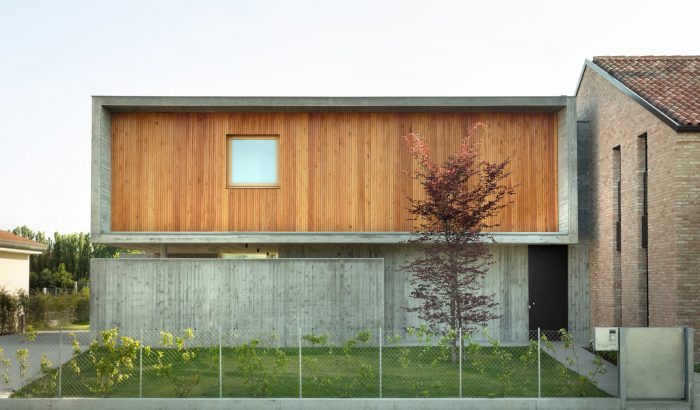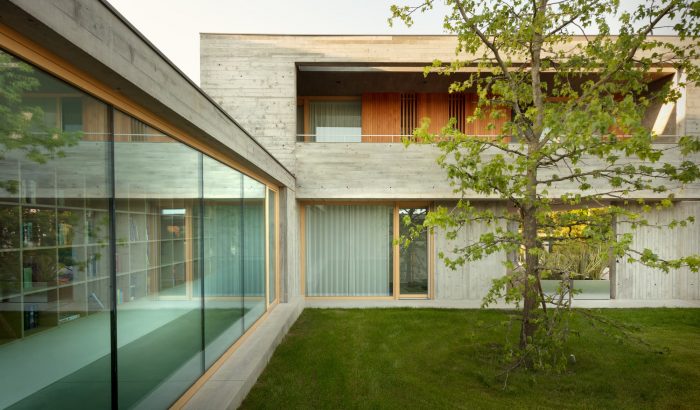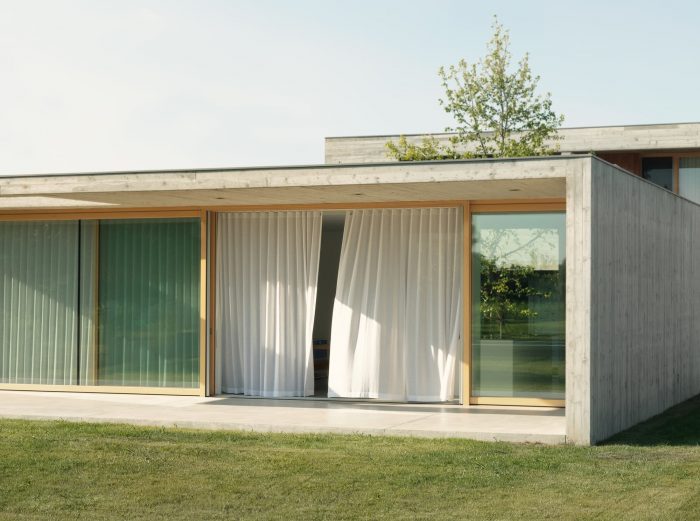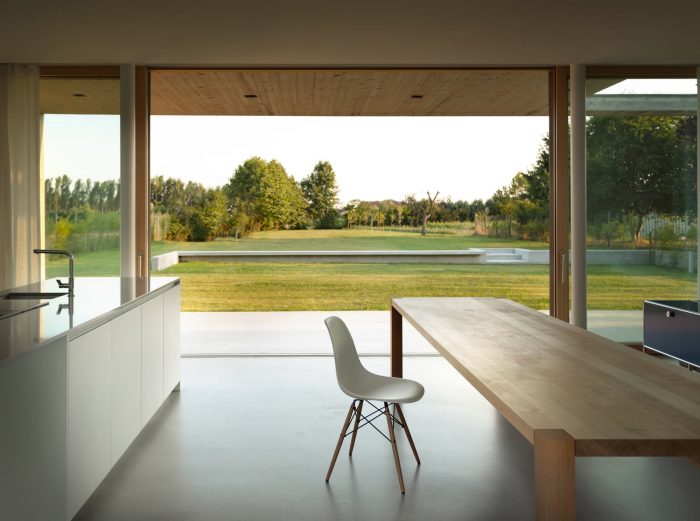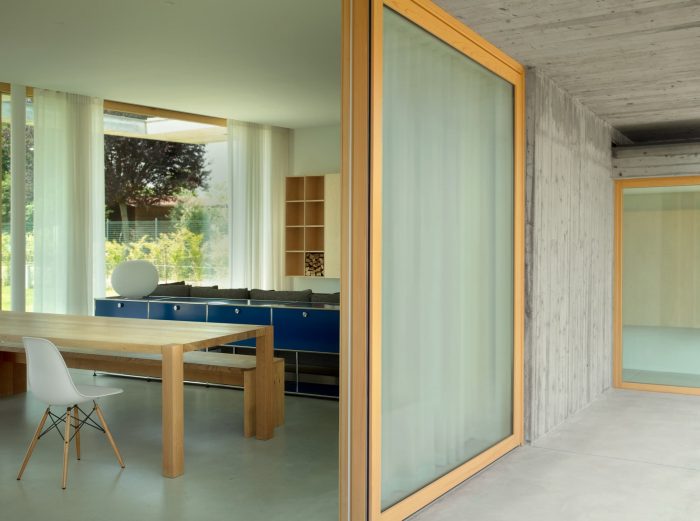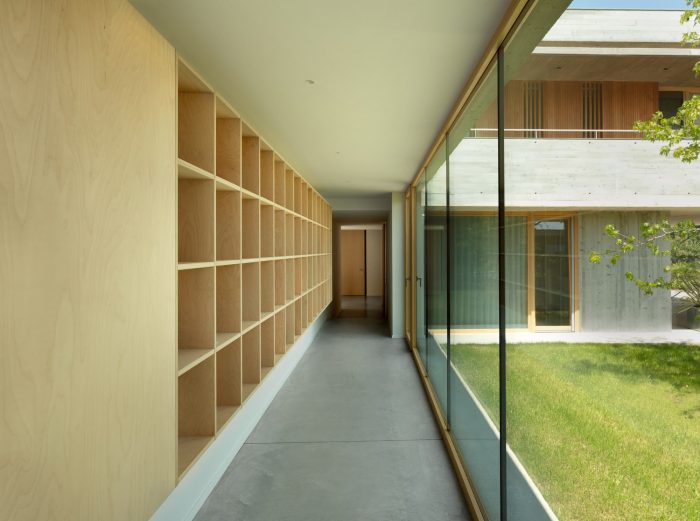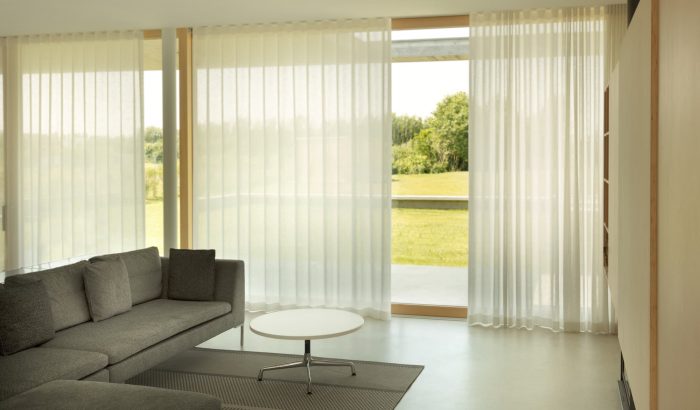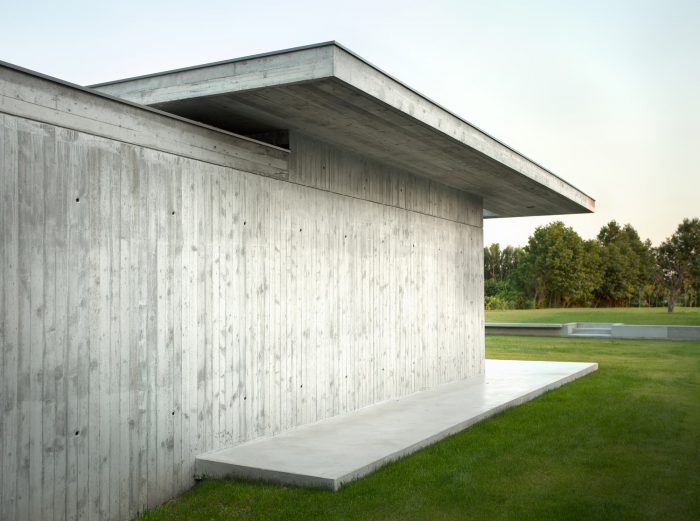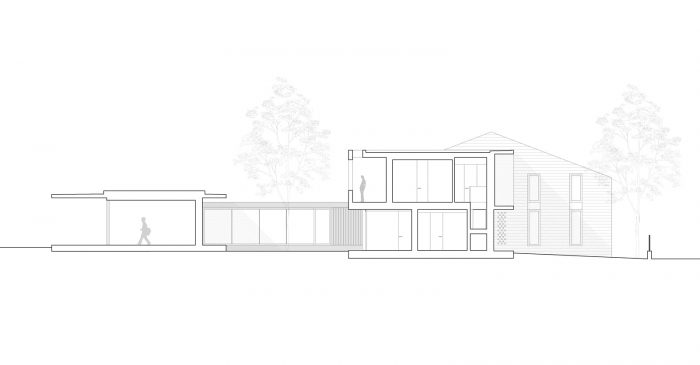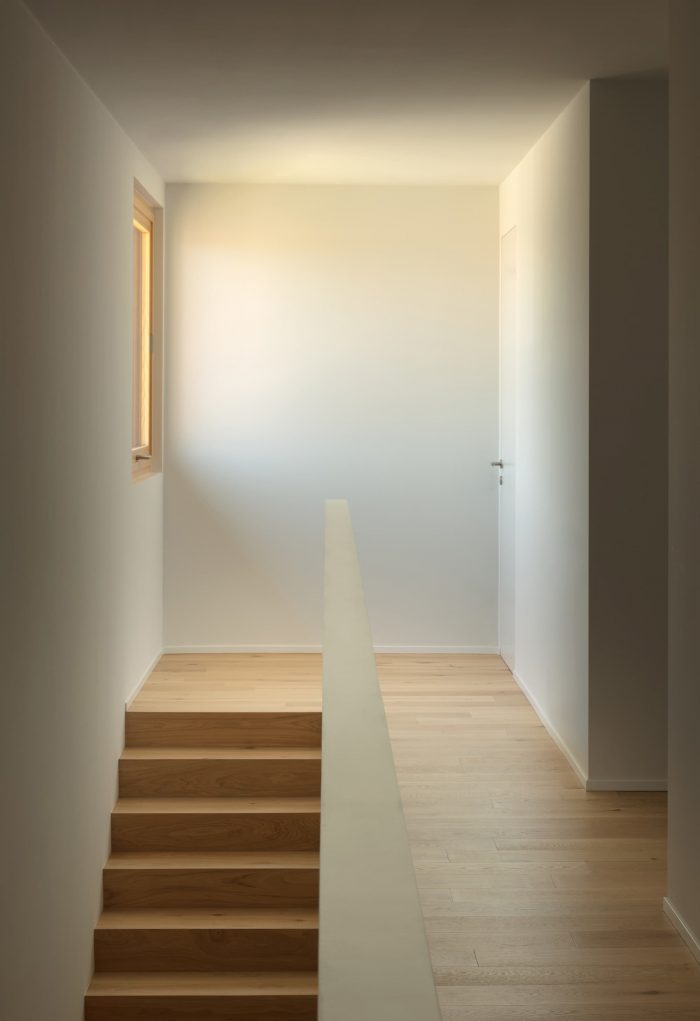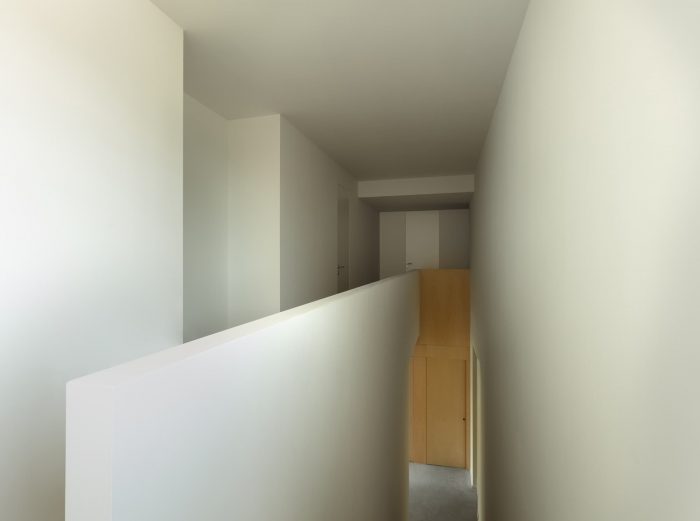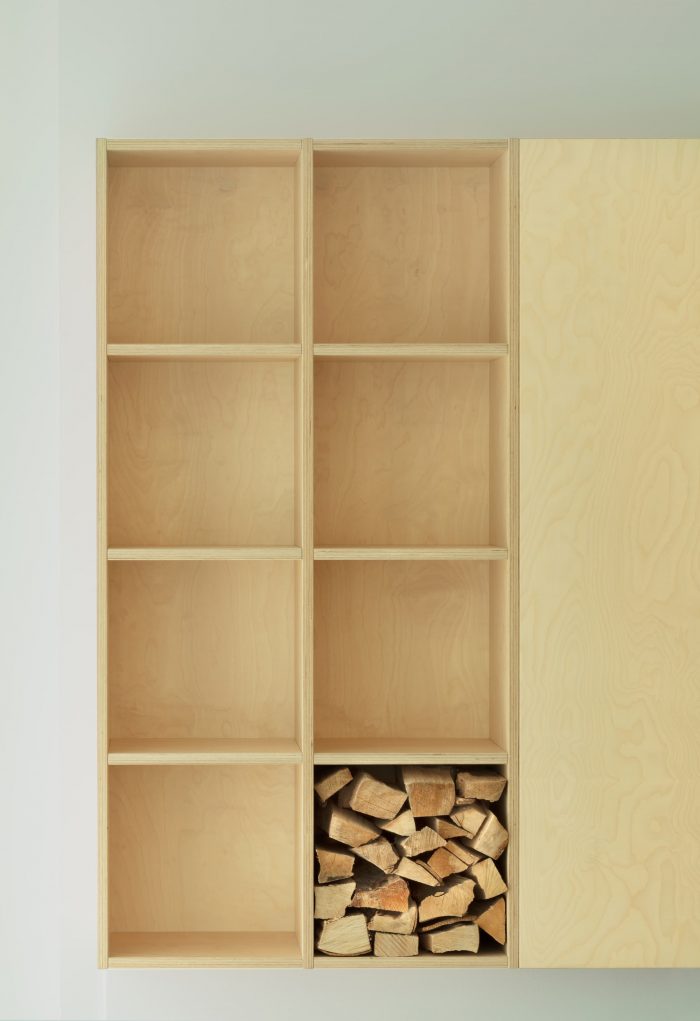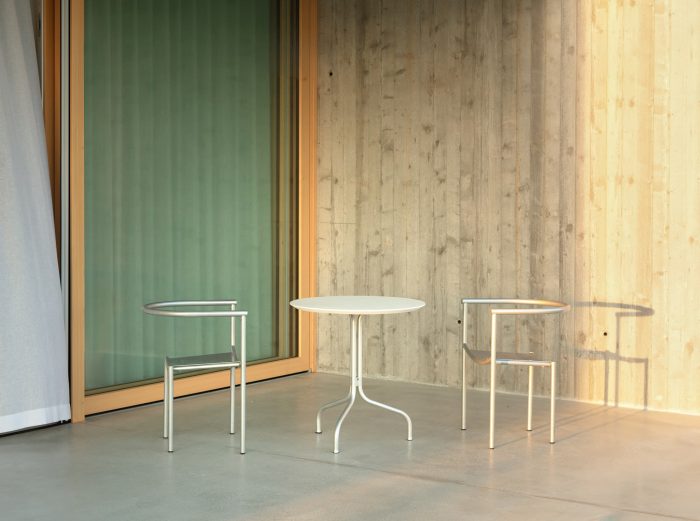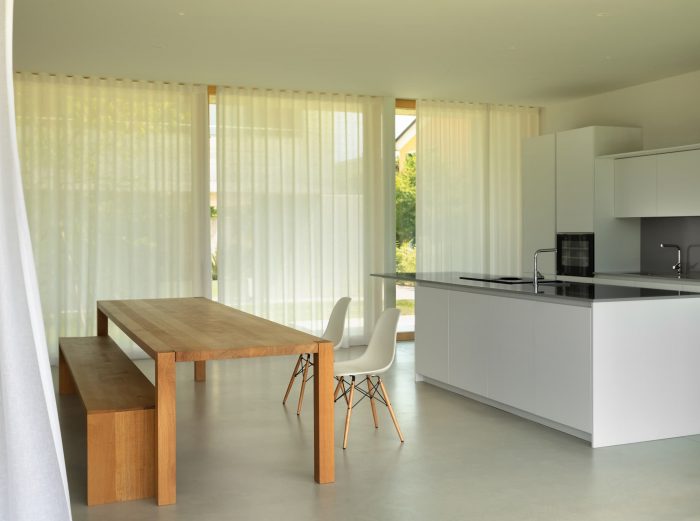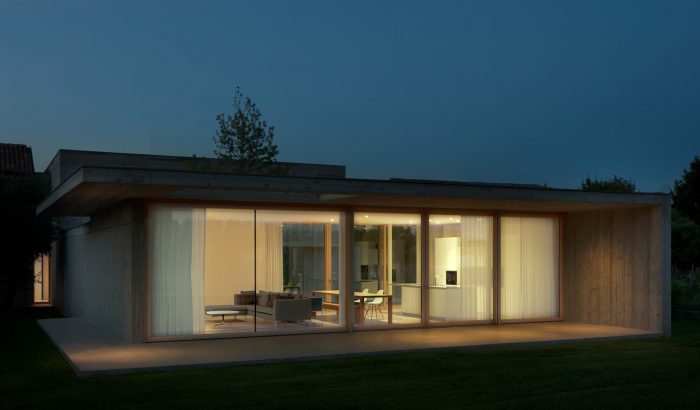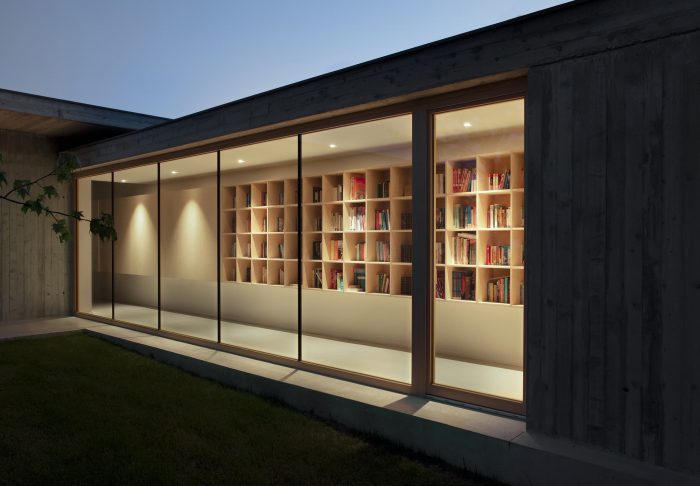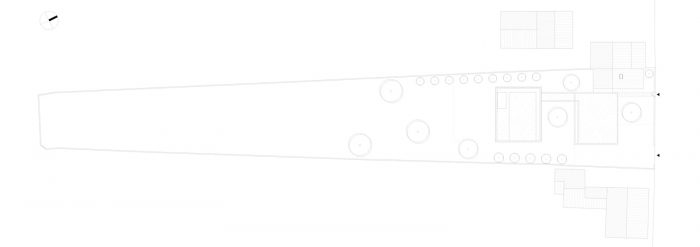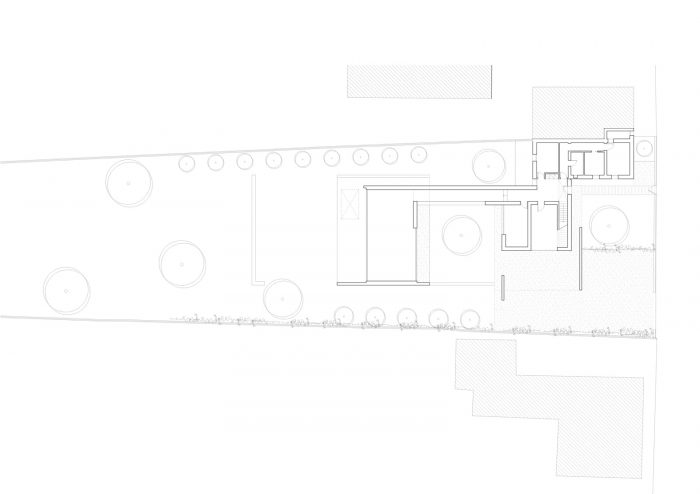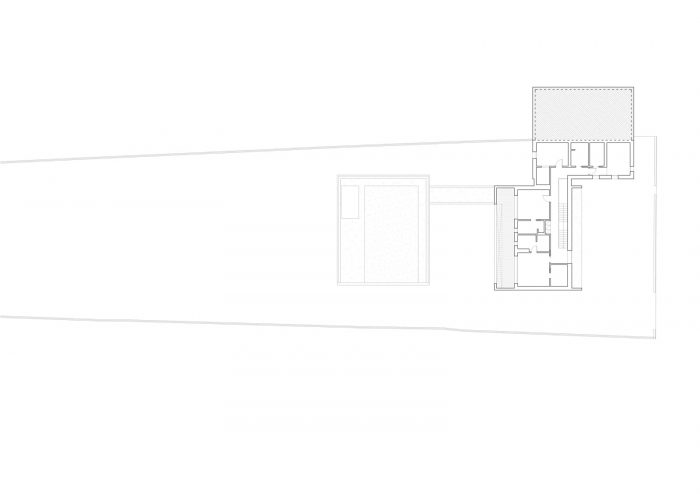这个概念包括对农村建筑的改造和拆除一个建于六十年代的相邻建筑。除了重新发现原始建筑的简单和谐的比例外,部分拆除使新项目能够加强场地的特点,即压缩在两个建筑区之间,并向乡村开放。
The concept consists of the renovation of rural architecture and the demolition of an adjacent volume built in the Sixties. Besides rediscovering the simple and harmonious proportions of the original building, the partial demolition allows the new project to enhance the site’s features, compressed between two built areas and open to the countryside.
为了满足客户的功能要求,并利用场地的形态,房子的一个新的延伸被开发到农村地区,从而远离了这个地方特有的建筑无序。
In order to meet the client’s functional requirements and take advantage of the site morphology, a new extension of the house is developed towards the rural area, thus moving away from the building disorder that characterizes the place.
遵循相邻房产的体量被翻新,恢复了原有的类型特征和农业环境的材料,如围墙的面砖和双坡屋顶的瓦片。
The volume in adherence to the adjacent property is renovated, recovering the original typological characteristics and materials of the agricultural context, such as the facing bricks of the envelope and the tiled mantle of the double-pitched roof.
同时,一个新的清水混凝土的平行管道,与之前的管道相连,在后方升起,定义了一个有机的整体。混凝土有三种不同的表现形式:外墙是平滑的,带有石碑模板的印记,内部地板是平滑的,外部地板是水洗的,带有暴露的骨料。
At the same time, a new parallelepiped in fair-faced concrete, connected to the previous one, rises in a rear position, defining an organic whole. Concrete finds expression in three different declinations: smooth with the imprint of the tablet’s formwork on the facades, smoothed on the internal floors, and washed with exposed aggregate on the external ones.
因此,面向街道的公共立面由两个非常不同的体量组成,具有不可渗透的特性:在砖块体量上,有两个狭窄的双层高度的缝隙,在混凝土体量上,模板的垂直分割与覆盖一楼的木板的紧密节奏进行对话,被一个单一的方形窗户所穿透。
The public facade facing the street is thus composed of two very different volumes with an impenetrable character: on the brick volume, there are two narrow double-height slits, on the concrete one the vertical division of the formworks dialogues with the tight rhythm of the wooden planks that cover the first floor, pierced by a single square window.
在这个连续的环境中,容纳了睡眠区和服务功能,一个由白桦木长书柜占据的玻璃走廊到达房子的中心,产生了一个从入口到客厅到花园的连续视觉轴。
After this continuous setting, which houses the sleeping area and the service functions, a glazed gallery occupied by a long bookcase in birch wood reaches the heart of the house, generating a continuous visual axis from the entrance to the living room up to the garden.
另一个清水混凝土体量,在单一层面上开发,与之前的体量不同,为生活区提供形状。它可以完全朝向农村环境开放:在两个主要侧面,大窗户将其与南部的草地和北部的内部庭院连接起来,而没有开口的侧面则保护家庭生活的隐私。
A further fair-faced concrete volume, developed on a single level and distinct from the previous one, gives shape to the living area. It can be completely opened toward the rural environment: on the two main sides, large windows connect it with the grassy area to the south and with the internal courtyard to the north, while the side facades with no openings protect the privacy of family life.
一个院子通过不同层面的景观来衔接房屋的空间性,例如从一楼的凉亭看出去的景观。在这里,垂直落叶松板的覆层在靠近浴室的地方变薄,并与卧室的大推拉窗交替使用。建筑的简单性与室内的本质性相呼应,白色的墙壁、白面的混凝土地板、家具和白桦木的装置。
A courtyard articulates the spatiality of the house through views on different levels, such as the one from the loggia on the first floor. Here the cladding in vertical larch boards thins out near the jealousies of the bathrooms and alternates with the large sliding windows of the bedrooms. The simplicity of the architecture dialogues with the essentiality of the interiors, with whitewashed walls, fair-faced concrete floors, furnishings, and fixtures in birch wood.
庭院的向心性与平面配置的轴向发展相吻合,它将起居室向南边的花园延伸。在这里,一个外部的混凝土长凳分割了草地的延伸,划定了最靠近别墅的部分,并管理了场地的自然不均匀性。
The centripetal character of the courtyard meets the axial development of the plan configuration, which projects the living room towards the garden to the south. Here, an external concrete bench divides the grassy extension, delimiting the part closest to the villa and managing the natural unevenness of the site.
Architects: depaolidefranceschibaldan architetti
Photographs :Karina Castro Fotografía
Manufacturers : FLOS
Structure Project : Ing. Giovanni Geromin
Program / Use / Building Function : Residential
City : Padova
Country : Italy


